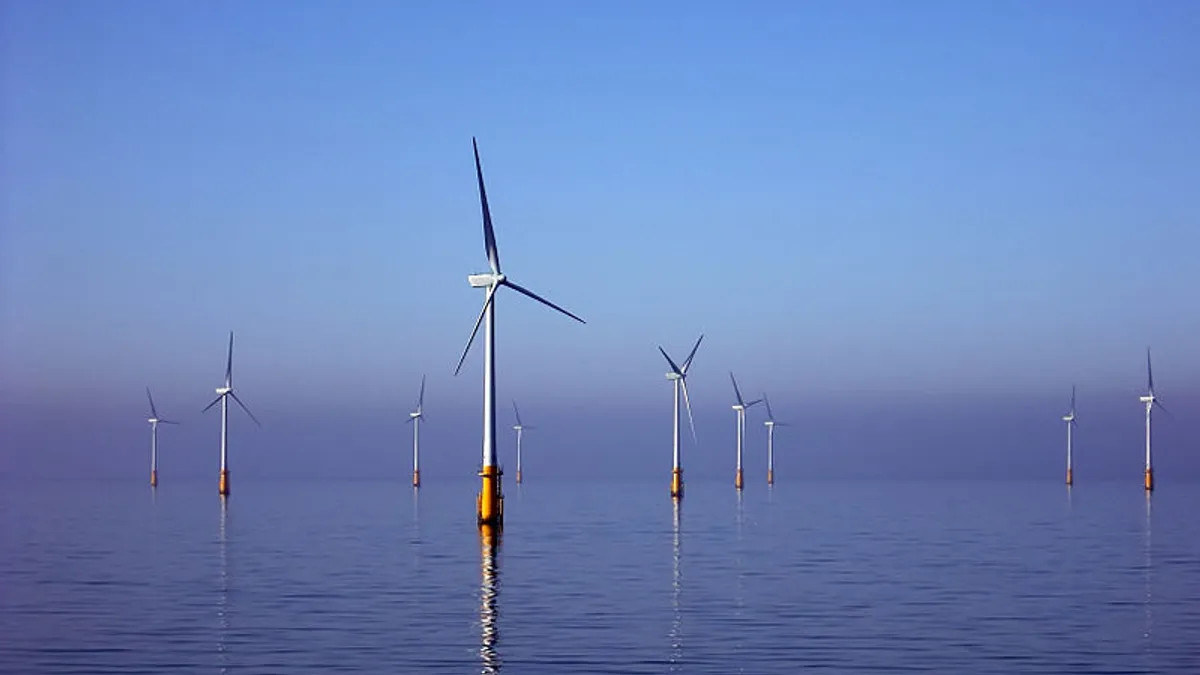Dive Brief:
- Massachusetts' largest utilities issued a formal request for proposals last as part of the state's plan to acquire 1,600 MW of offshore wind projects.
- The initial RFP seeks 400 MW of offshore wind capacity, though the amount could be increased depending on bids submitted. Proposals are due in December, according to MassLive.com.
- Three wind project developers are expected to submit projects including: Deepwater Wind, Bay State Wind, and Vineyard Wind.
Dive Insight:
After months of preparation, Massachusetts' offshore wind energy solicitation is live. Though the United States has only one offshore wind farm currently operating, clean energy supporters said the RFP marks critically important momentum" in the state's press for more renewable power.
“The national significance of this moment cannot be overstated," National Wildlife Federation Senior Manager Catherine Bowes said in a statement following the RFP release. The conservation group called the RFP "a nationally unprecedented step forward for clean energy.
European demand pushed down offshore wind costs. At least 90% of offshore wind capacity is built off the coasts of 11 countries. But more U.S. coastal states want to incorporate the resource to meet clean energy goals, particularly since the first successful offshore wind project came online at the end of last year.
Deepwater Wind recently began operating the 30 MW Block Island wind farm offshore Rhode Island, and has indicated it would submit a proposal. DONG Energy and Vineyard Wind, both based out of Denmark, are also expected to submit proposals
DONG two years ago announced plans to build a wind farm that could be as large as 1,000 MW, about 15 miles off the Massachusetts coast, but the company sold a 50% ownership stake in the Bay State Wind project to Eversource. Avangrid Renewables owns half of Vineyard Wind, after announcing the purchase in May from Copenhagen Infrastructure Partners.
While the United States has been growing its wind energy resources, development focused on onshore construction since costs and local opposition stymied offshore projects. For instance, Massachusetts' Cape Wind offshore wind project faced numerous such obstacles, including local opposition, for more than a decade. But the state, and now New York, have backed ambitious offshore wind goals to meet clean energy targets. New York Gov. Cuomo pledged to bring 2.4 GW of offshore online by 2030 to help meet clean energy goals.
Maryland is another state opening its shores to offshore wind. In May, regulators approved two offshore wind projects with a combined capacity of 368 MW, and awarded ORECs valued at a levelized cost of $131.93/MWh for 20 years.
Last year, global offshore wind capacity was almost 12,000 MW and is on track to reach as much as 47,000 MW by 2020, according to the National Renewable Energy Laboratory.














